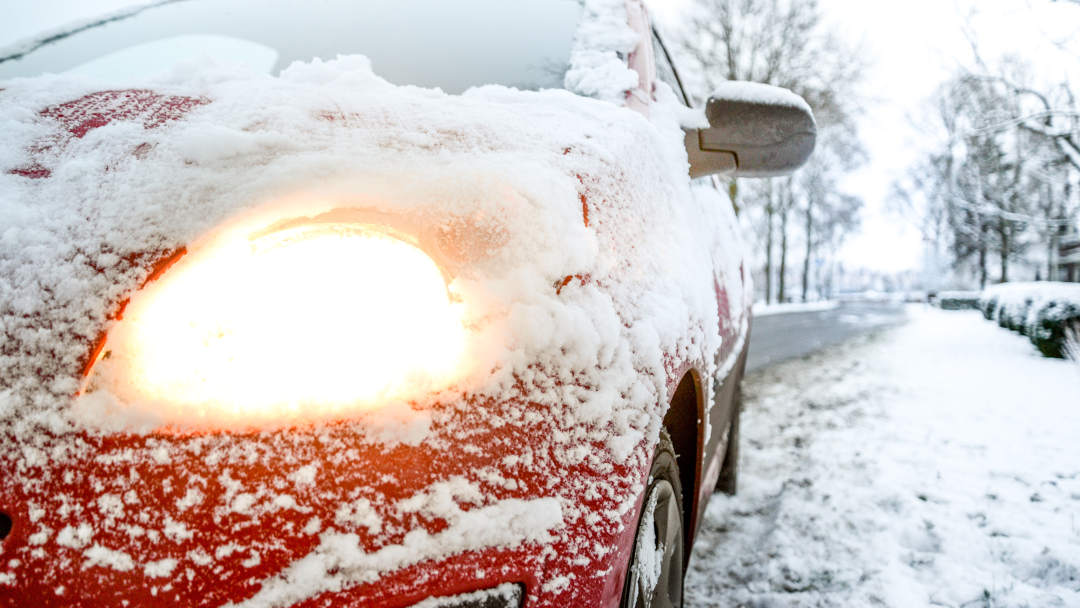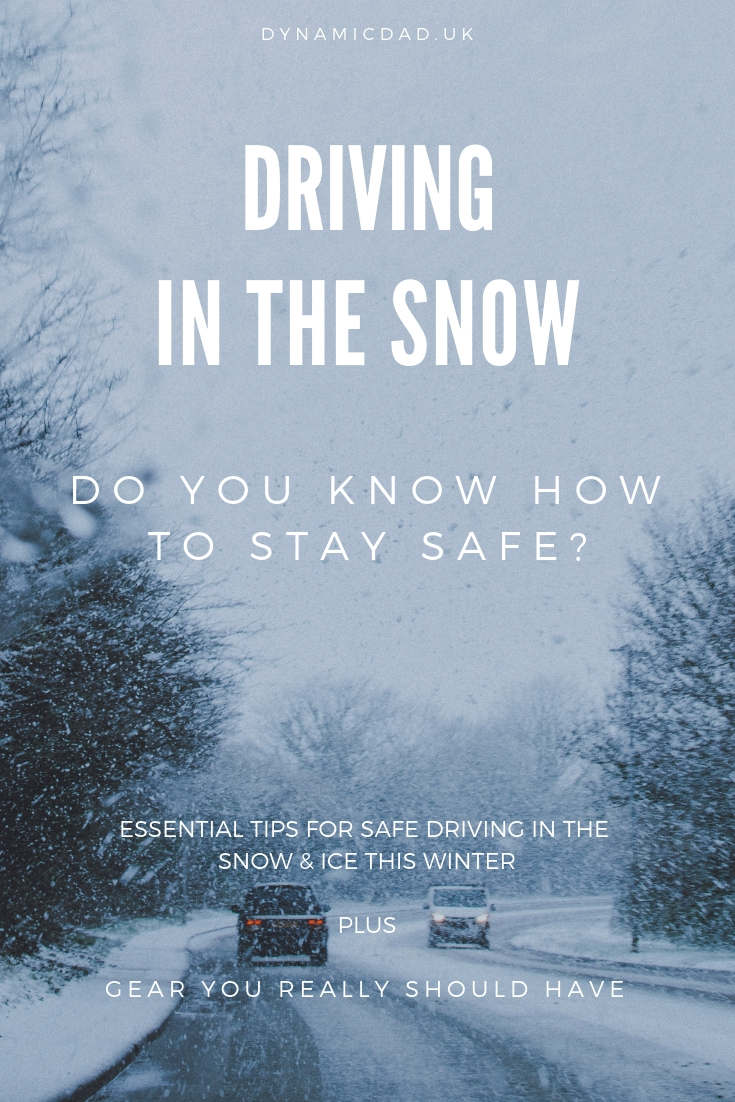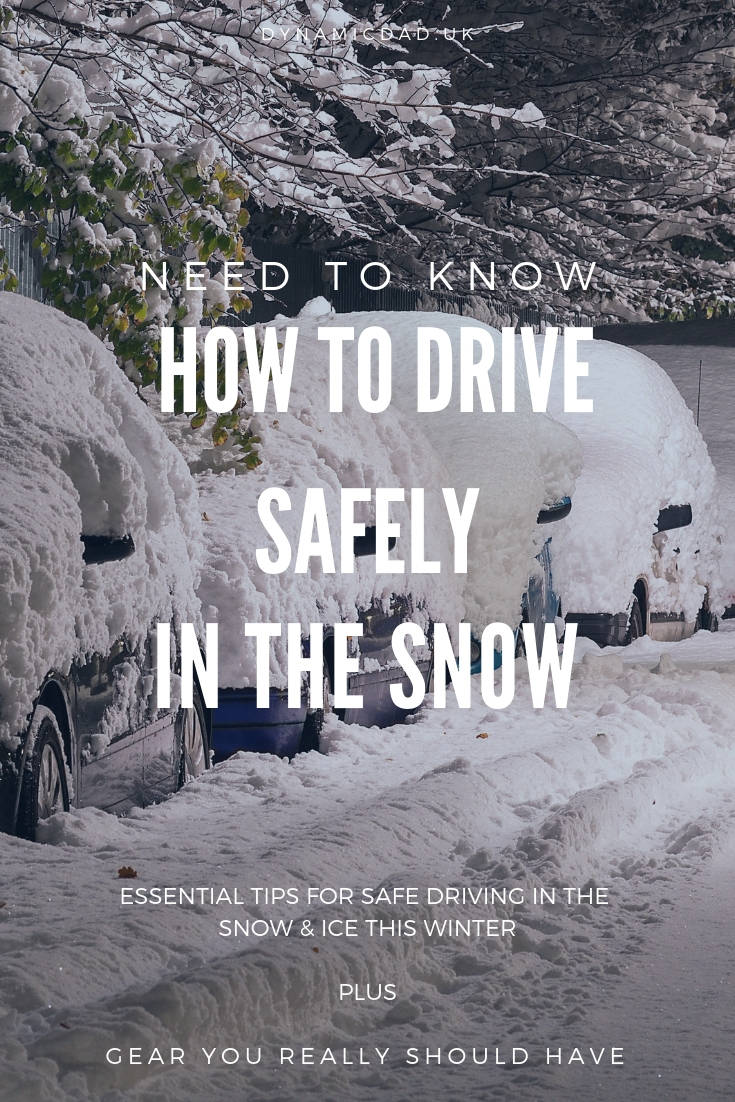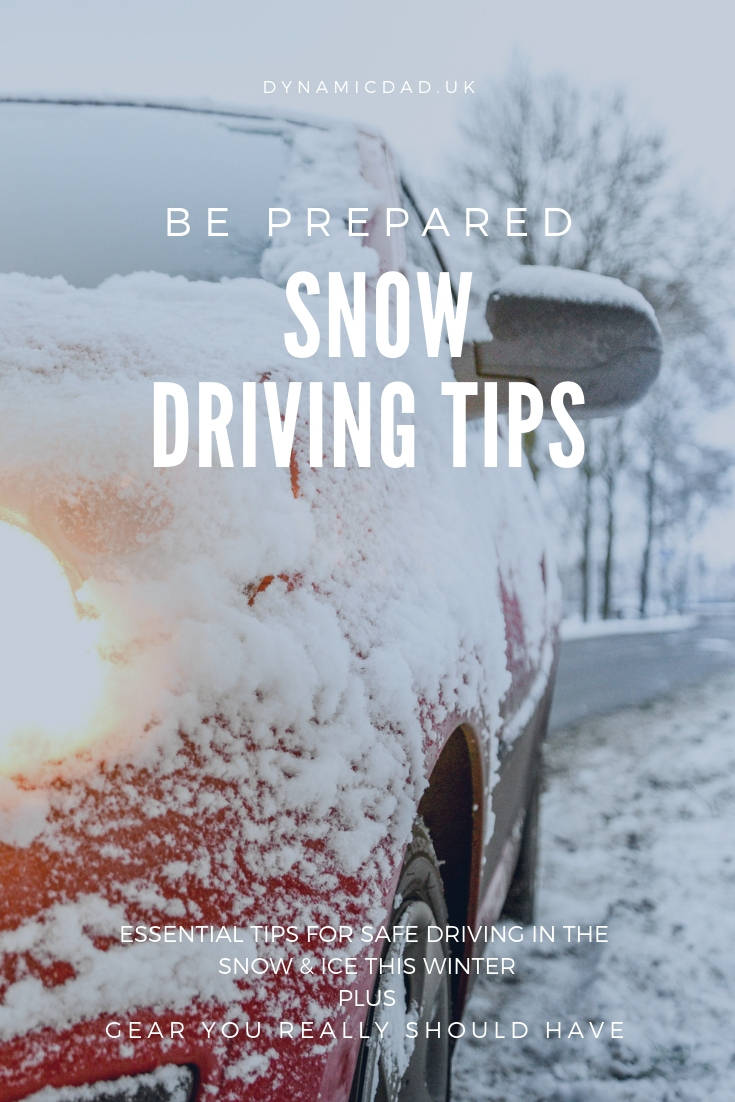How to drive safely in the snow
 Last year we had “The Beast from the East” & this year several parts of the UK have already had a good dose of snow – causing the usual havoc. You need to know how to drive safely in the snow because let’s face it, as a country we just can’t handle the stuff!
Last year we had “The Beast from the East” & this year several parts of the UK have already had a good dose of snow – causing the usual havoc. You need to know how to drive safely in the snow because let’s face it, as a country we just can’t handle the stuff!
Of course, this doesn’t just apply to safe driving in the snow – we’ve yet to experience the coldest temperatures & icy roads too, even without the white stuff.
For those of you who are already thinking “I’m OK, I’ve got a 4×4”, remember that your car weighs more, so although you can get going where others can’t – you’re more likely to skid on corners & when trying to stop, so this applies to you too!
I’ll cover some basics of the whys and how to drive safely in snow, how to recover a skid in snow, and a look at some gear for driving in the snow as well.
Knowledge is power:
To drive safely in snow & on icy roads there are a number of things you need to consider:
Your tyres have less grip, so even the lightest covering of snow on the road can significantly increase your chances of skidding, more so if you’re in a heavier vehicle with a lot of inertia.
Skids can be caused by several reasons, sometimes happening together:
- Front wheels losing grip, normally causing understeer (not going around the corner).
- Rear wheels losing grip, normally causing oversteer (the back of the car slides out or starts to “fishtail”, this is more common).
- Braking causes wheels to lock up where they wouldn’t normally (because there’s less traction to keep them turning).
- Acceleration causes wheels to lose grip & they start to spin.
Most severe and fatal accidents happen with only very light coverings of snow or ice – drivers don’t seem to slow down until it “looks” bad, or they’re forced to by traffic. Know now and appreciate that it’s a lot worse than it looks – and drive accordingly!
Any time the temperature is near, at or below 0oC there is a risk of ice during and after ANY precipitation such as snow, sleet, rain, drizzle, mist or even fog. The moisture can and will freeze onto the road surface.
Exposed areas are more likely to develop “surprise” ice – like bridges, overpasses and even roads under clear sky when it’s otherwise generally cloudy. They cool faster than the surrounding areas, ice up and can catch a driver off guard.
Lights aren’t just so you can see what’s ahead of you. They enable others to see you coming (or ahead, if they’re behind you). Even if it seems bright outside, turn on your lights in poor weather conditions. Your automatic lights probably won’t do it themselves, so you need to turn them on manually.
How to drive safely in snow:
1. Slow down!
Speed is your greatest enemy and best friend in these & other poor weather/poor visibility situations. Allow extra time for your journey and remember that the speed limits are set for optimum driving conditions, not hazardous ones. Correcting a skid becomes more difficult as speed increases.
2. Keep your distance:
Look and plan much further ahead than you normally would for braking and cornering, to drive in snow you need to give yourself plenty of time. Keep your distance from the car ahead to give you extra time to spot & react to their slowing, turning or loss of control.
3. Gently does it:
Use smooth control inputs – steering, accelerator and brakes – to reduce the risk of a loss of control. Large changes of steering input, power or braking in a short space of time are more likely to cause a skid, especially braking.
4. Pulling away:
As traction is reduced, the more likelihood there is of a wheelspin when trying to move off when driving in snow. You can reduce this risk by using lower RPM and possibly a higher gear, such as pulling away in 2nd. Some automatics have a “Winter” setting to help in these conditions.
5. Braking:
Use engine braking as much as possible to slow down, rather than the brake pedal where the risk of locking the wheels is increased. (Driving smoothly like this will also save you money in the long run too, less brake wear etc.).
In general, brake much earlier than usual and brake gently. Even with ABS and ESP systems, the car can only stop using the traction available from the tyres. When driving in snow, there isn’t much – so allow plenty of space – the Highway Code suggests braking distances can be as much as 10 x longer when you drive on snow and ice.
Where possible, always brake in a straight line as this reduces the risk of a skid out of the turn, and always make sure you can see your full braking distance ahead of you. If you round a corner to find the road blocked without enough time to stop your addition to the scene won’t be a positive one.
6. Cornering:
To drive safely in snow around corners, the cars speed needs to be much lower than normal to reduce the risk of skidding, possibly into the oncoming traffic. Slow down on straight road before the corner and use smooth and gently steering inputs. Avoid braking on the corner and use the throttle to maintain speed and keep the car balanced.
7. Roundabouts & Junctions:
When driving in snow in particular, these can be some of the most dangerous places. First, we must consider all of the above and the risk of skidding into the path of other traffic while approaching the junction. As before, slow down early and gently, to stay clear of other traffic, as well as any position where other traffic may skid into you.
Where possible, it can be preferable to keep moving at a slow speed rather than stop so as not to get stuck trying to pull away. However, getting stuck is inconvenient, an accident can be much worse.
With a covering of snow on the road, lane markings can be hidden making it difficult to know which lane you should be in, as well as predicting what other traffic’s intentions are based on their road position. Help everyone out by using your indicators too!
It is likely that most traffic will stick to the clear tarmac made by other vehicles’ tyres and there is a good chance that traction there is better. You may wish to do the same rather than rather than risk skidding or getting stuck in uncleared snow.
8. Hills & Slopes:
In icy and snowy road conditions, driving up or down hills and slopes to bridges, crossings & the like can present additional problems. These are the places you are likely to see the most stuck vehicles.
As with driving safely in snow in any capacity, for driving up a hill (or slope) planning ahead is key. Leave as much distance between you and the vehicle ahead as possible so you can try to avoid stopping on the way up.
Where appropriate, reduce your speed on the approach until the hill is clear and accelerate gently just before the bottom to allow momentum to help carry you up the hill.
When driving down an icy or snowy hill, remember that gravity is against you and will gladly accelerate your car if you start to skid. Drive slowly and avoid sharp braking or steering input, where possible use engine braking to limit your speed.
9. Built up & Residential areas:
There are several added hazards in these locations, including that they are less likely to have been gritted – so even if your journey has been patchy so far on main roads, the risk of ice & skidding can be increased the closer you get to home, especially if you start to relax before you’re safely indoors.
On top of this, you’re more likely to encounter parked, badly parked and abandoned vehicles, pedestrians and children who are just as likely to slip and fall – possibly into the road – and narrower roads with other traffic all vying for progress.
Take it very slowly and be especially alert of your surroundings. It really doesn’t matter whose fault it is, an accident is an accident and people can get hurt.
How to recover a skid driving in snow or ice:
1. Don’t Brake!
There is a good chance that braking is actually what caused the skid in the first place. Your wheels need to be turning in order to gain control. On a slippery surface, such as driving in show or ice, even gentle braking can lock the wheels, make the skid worse and recovery more difficult if not impossible.
2. Smoothly lift of the throttle.
If the wheels have started spinning, easing off the throttle will allow them to slow down to match the speed of the vehicle. If they haven’t & there’s still some traction, engine braking will help you slow down and the risk of locking the wheels is less. For those with a rear wheel drive like me, this is especially important. Now is not the time to learn ‘drifting’!
3. Steer into the skid – gently.
The most common skid at speed is oversteer – the back sliding out. To recover, steer a proportional amount in the same direction as the back is sliding. E.g. if the back of the car is sliding to the right, steer to the right.
As the wheels start to come back into line, expect the skid to oscillate into a ‘fishtail’ and be prepared to steer smoothly, quickly and proportionally in the opposing directions.
For an understeer skid – the front of the car didn’t turn, the same applies. Steer into the skid, i.e. where the car is going (to align the wheels and regain control), then try to steer where you wanted to go again.
Turning the wheel “more” into the direction you wanted to go when it started skidding will only reduce traction and control and make things worse.
4. Don’t over-correct.
It might be tempting to use larger steering inputs to recover the skid faster, unfortunately it doesn’t work.
The steering wheels need traction to recover a skid, and over-correcting will cause a loss of traction and start a skid for these wheels too – a complete loss of control and probably a complete spin out – hopefully not into anyone.
Before you go:
Clear ALL the windows on the car. You may not realise how much you use your peripheral vision, but that’s how humans evolved to detect movement (to avoid and escape predators/rival tribes).
Today, your peripheral vision is essential for safe driving, especially in the snow, as that’s how you’ll spot other traffic, pedestrians etc. with enough time to react smoothly.
Make sure you also clear other flat surfaces where snow has accumulated – you don’t want to be either of these drivers…
Compacted snow can fly off in sheets when at even low driving speeds – imagine if this slab of snow had hit & injured a pedestrian or even a child.
Similarly, snow can slide forwards off your roof under braking and cover your windscreen, leading to an accident because you’ve been blinded – or having to get out of your car on a possibly busy road to clear your windscreen, again.
Pack supplies
There is, unfortunately, a good chance of getting stuck or being involved in an accident. Make sure you have some warm clothes, snacks and drinks to tide you over in the event things don’t go your way.
It won’t be the first time someone has had to spend the night in their car stuck on a motorway or back road and it won’t be the last.
Top up the tank
If you’re out driving in the snow, you will be delayed. Don’t leave with a thimbleful in the tank, try to keep 1/4 or more during winter as you never know when you’ll need it.
Plan for main roads
As we’ve discussed, residential streets are less likely to be gritted. The same goes for back country B roads. Plan your route to favour main roads that are more likely to be cleared.
Equipment you should consider:
For driving in the snow in particular, I suggest you get your hands on the following:
Snow Shovel
Even if you only have to dig yourself out of your own driveway, having a lightweight shovel designed for the purpose, and that can fold away to be stored in the boot of the car is a blessing.
I used mine for the first time in anger recently and I’m glad I had it. Mine can be stored in it’s own little pouch, the fold out handle locks easily with a twist of the shaft and it’s the ideal size for getting at the wheels without damaging the bumper or sills.
I use this AA one.
Snow Socks
They don’t take up a lot of space in the boot, were relatively easy to fit, if a little fiddly, and meant that I could drive safely to where I needed to go without getting stranded in the snow & ice.
For the little investment it took, I’m incredibly happy I had them and they did a great job.
I have two pairs of these and you can read my review of their first use soon.
Emergency Torch
It snows in winter, when the days are shorter. If you’re going to get stuck, there’s a good chance it’ll be at night. Having a torch is a must, Emergency Torches have a few extra features for almost no difference in price.
One of the most important of these is a glass hammer – if you’ve had an accident and the doors are jammed, or you need to get someone else out of their car, the hardened point on these torches makes for easy access or exit.
Other useful features include seatbelt cutters, strobe functions to attract attention and some come with multi tools too.
This is the one I have, Osram know their lights and this comes with seatbelt cutter & glass hammer too.
First Aid Kit
You should really have one of these in your car anyway! Mine saw its first use in the snow though, not because I was hurt, but because another driver who’d gotten stuck in the snow came over to see what I was doing while I was fitting my snow socks. Unfortunately for her, she slipped as she was leaving and ended up with a bloody nose. Out came the first aid kit, wipes and dressings.
Mine is a custom kit, but there are plenty of off the shelf options like these on Amazon.
High Visibility Vest
For wearing while doing all of the above – and not getting run over! You can get a family pack of vests from the AA on Amazon for around £10 here, which is a pretty good deal.
These are but a few of the things you really should consider, I have a more thorough post with a whole host of equipment you ought to have at the ready for winter driving here, as well as tips on preparing yourself and your car in the first place.







